The Mosaic Tile HouseCheri Pann (b. 1940) and Gonzalo Duran (b. 1943)

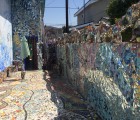


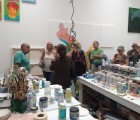
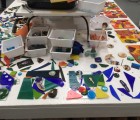


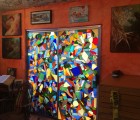


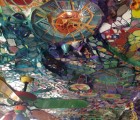









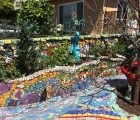





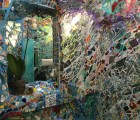







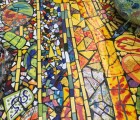


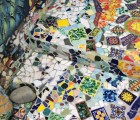









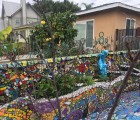
















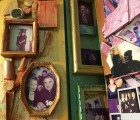





















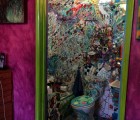















Extant
1116 Palms Boulevard, Los Angeles, 90291, United States
1994 to present
The front decorations are visible from the street, and their home is open for tours on Saturdays from 1 to 3pm without advance reservations. Admission is $20 for adults, $15 for seniors, and free for children under 12. Cheri and Gonzalo ask that for large tours, visitors contact them in advance. It is advised to check the website www.mosaictilehouse.com for holidays and closed dates.
About the Artist/Site
It was love at first sight. One day in 1992 Cheri Pann walked into NovaColor (a family owned paint manufacturing plant in Culver City) to buy paint. She said “I need something permanent and bright that doesn’t fade” and Gonzalo Duran said “I’m your man!” And to this day they are busily striving for something permanent and bright and non-fading.
Gonzalo was born in Mexico, and came to the US as a child. The son of a shoemaker who specialized in flamenco and folklorico shoes for Spanish and Mexican dancers, he was raised in the Boyle Heights area of Los Angeles. He studied art at Otis Art Institute as a teenager and, after high school, at Chouinard Art Institute. He worked daily at NovaColor until he retired in 2013. Cheri was born in San Francisco but also grew up Boyle Heights. Her mother, a nurse cum saleswoman, ensured that Cheri was well schooled in theatre, dance, and music. In her teens, however, she realized that her true calling would be in the visual arts. She attended UCLA for a couple of years, concentrating in printmaking, then continued at California State University, Los Angeles, where she concentrated on drawing and ceramics, ultimately earning her MFA. Today, both Cheri and Gonzalo work at both medium- and large-scale; she concentrates on portraits of Gonzalo and self-portraits, as well as her Tree of Life paintings, which are darker or more somber. In contrast, Gonzalo’s work is more whimsical, referencing a sort of magical realism.
They began working on modifying and expanding the house after Cheri purchased it in 1994. Transforming the small and nondescript Venice Beach 1940s bungalow into a single monumental and colorful work of art was not in the original plans; she purchased the small home because there was sufficient room in back to build a large studio that would accommodate her large-scale paintings. She then took a construction class at Santa Monica College and, with students from the class, along with Gonzalo, they built the two studios. Cheri was the General Contractor. After they were completed, Cheri began to make some tiles for the bathroom, and it grew from there – both the building and their attachment to each other. “It was a very ugly house,” Cheri remembers, “so we had to do something.” Gonzalo not only built the studio, but, with his range of skills, built their cabinets, their bed, and much, much, more. They painted the walls, indoor and out, with “strong and happy” colors of NovaColor paint, ripped out a wall in the kitchen, rounded the corners of walls, and added built-in shelving, all of which they have completely covered in deep and saturated colored trencadís (the grout, too, that holds the tiles together, was colored with NovaColor paint).
Cheri makes most of her tiles, either glazing pre-formed 4”x4” tiles with abstract designs or creating them herself by rolling out the clay and embossing them with a variety of stamps. Gonzalo also makes some of the tiles and paints them with phrases or images that appeal. The tiles are then broken and laid out using an intuitive approach. They started with the whole tiles, but as soon as they broke them, “it all came to life,” Gonzalo said. They laugh as they note that Cheri makes the tiles while Gonzalo breaks them (at first she couldn’t’t bear to break her own work, but now she joins in). He also creates the forms (the fortune cookie, the dolphins over the cutout bathtub, the iguana, the elephant, the giraffe-a-roo, the panda, and all of the benches) on which he attaches the tiles. While they estimate that it will take several more years to complete their vision, Gonzalo’s thought is that when they finish it, he would like to move and start all over again. Nevertheless, they would both like to turn the existing site into an historical landmark that will remain in the public domain.
Swirling color and humorous touches are everywhere, between pergolas and supporting buttresses trimmed with the handles of coffee cups, a door affixed with hundreds of pieces of flatware or tools, and bright passageways in which walls, ceilings and floors are all completely covered in broken tiles. An undulating front fence incorporates found natural or fabricated objects including garage sale finds of ceramic figurines and wrought iron findings or remnants. An outdoor hot tub is framed by an elaborate gazebo, inspired and constructed like Sabato Rodia’s Watts Towers. The house is constantly changing and evolving as they get new ideas and refresh or refurbish older components.
The front decorations are visible from the street, and their home is open for tours on Saturdays from 12 to 3pm without advance reservations. Admission is $20 for adults, $15 for seniors, and free for children under 12. Cheri and Gonzalo ask that for large tours, visitors contact them in advance. It is advised to check the website www.mosaictilehouse.com for holidays and closed dates.
~Jo Farb Hernández, 2018
Contributors
Materials
tiles, paint, found objects, woodwork
Map & Site Information
1116 Palms Boulevard, 90291
us
Latitude/Longitude: 34.0000269 / -118.4568242
Nearby Environments



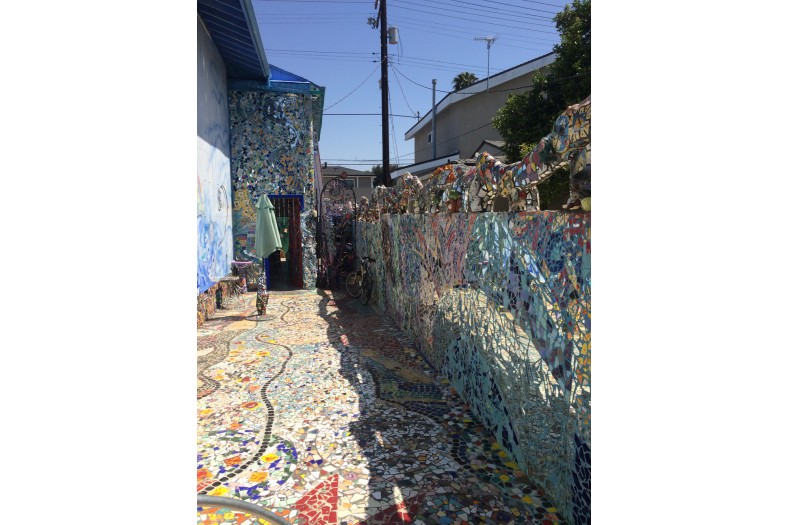
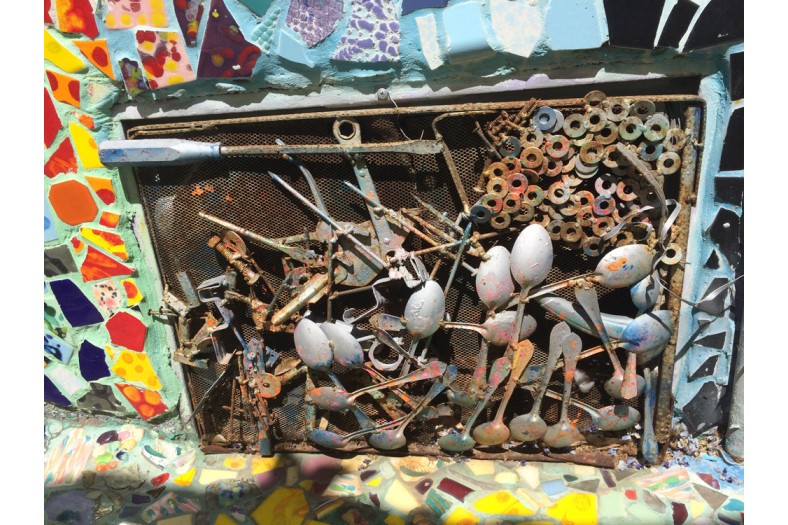









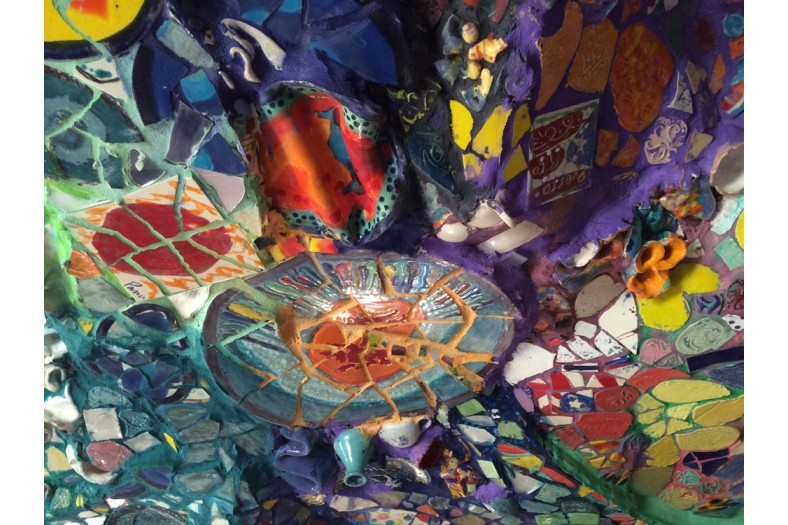


















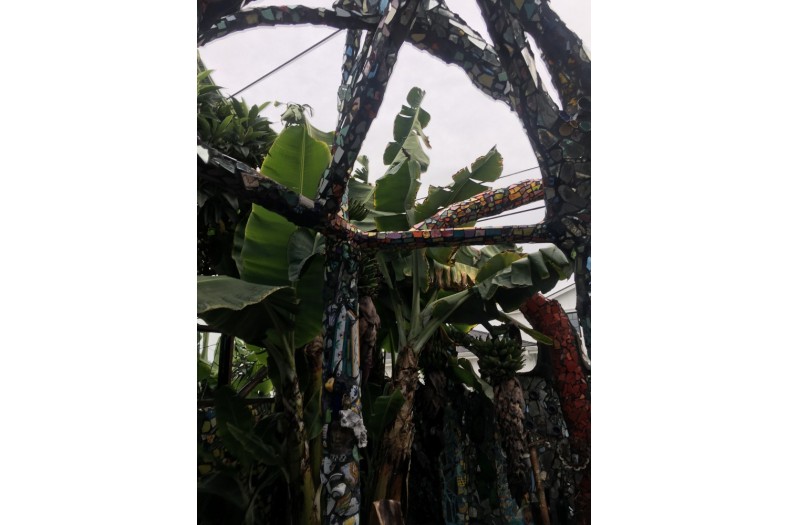
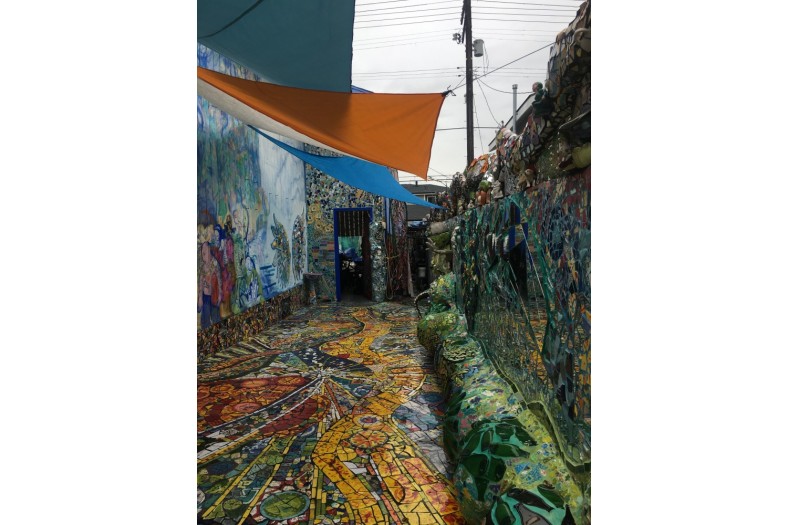






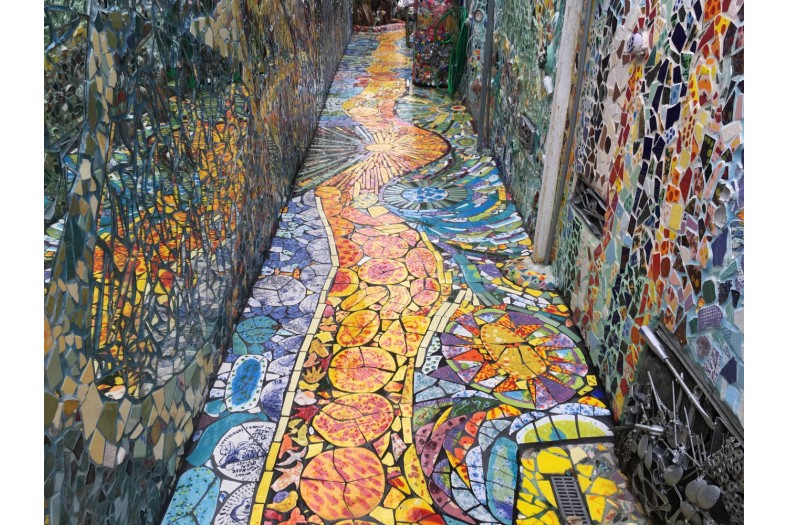


















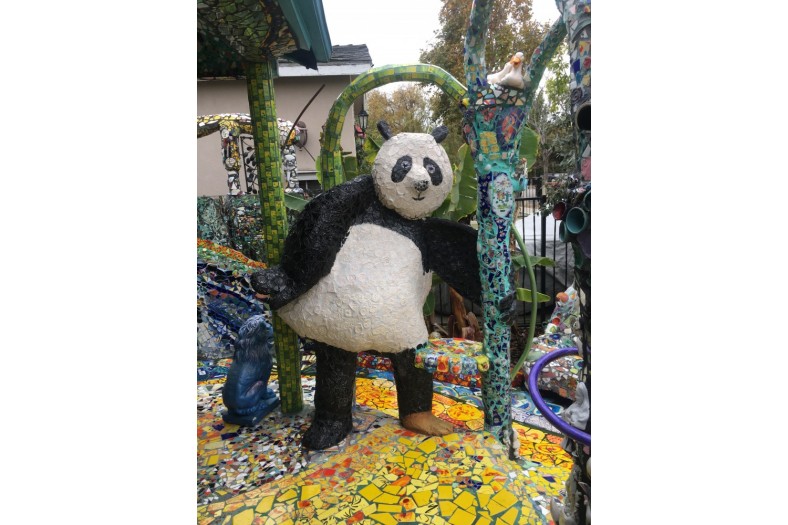


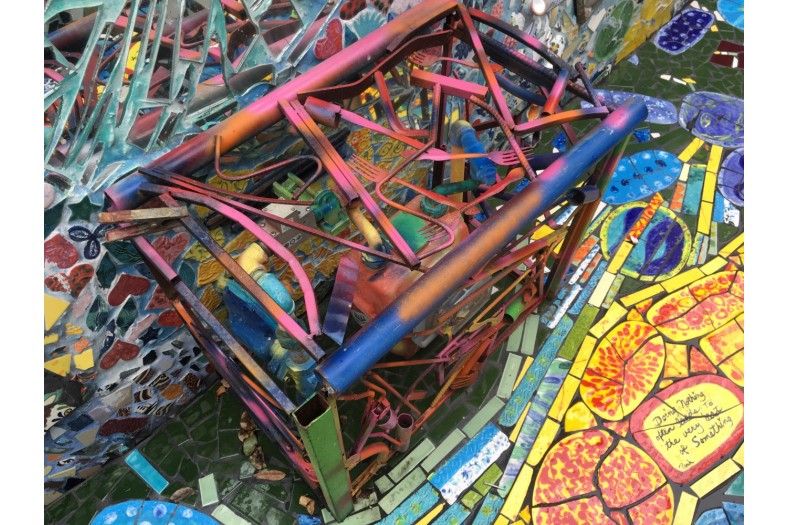






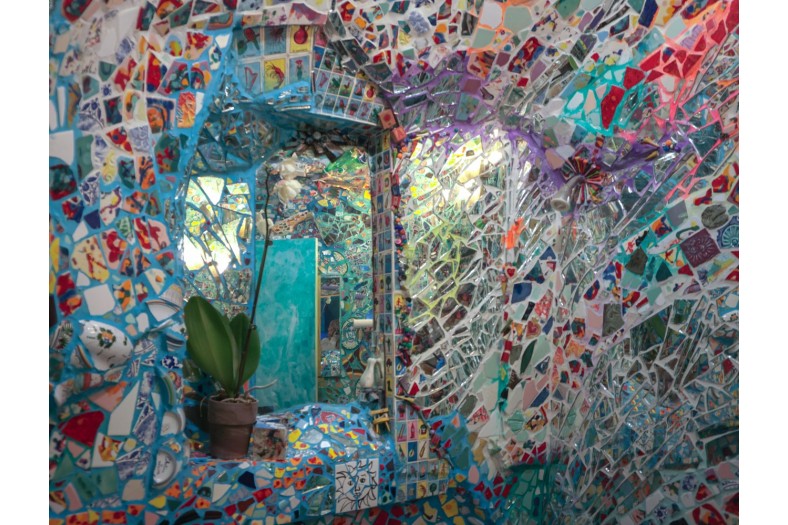





















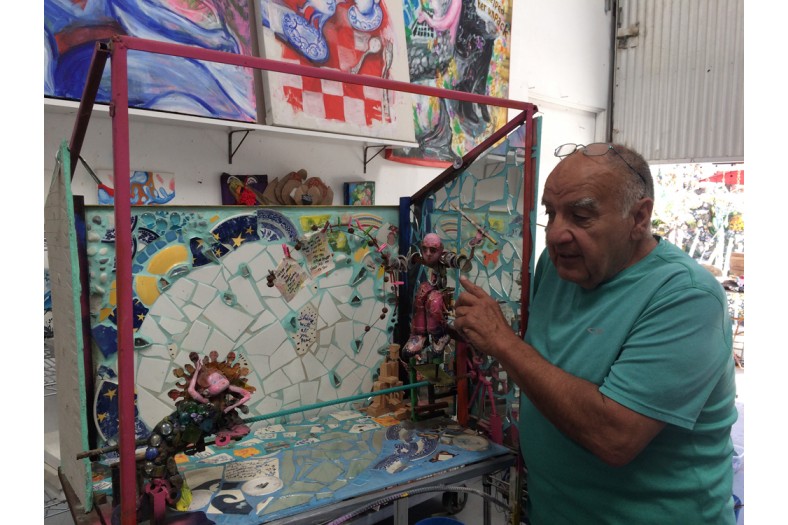









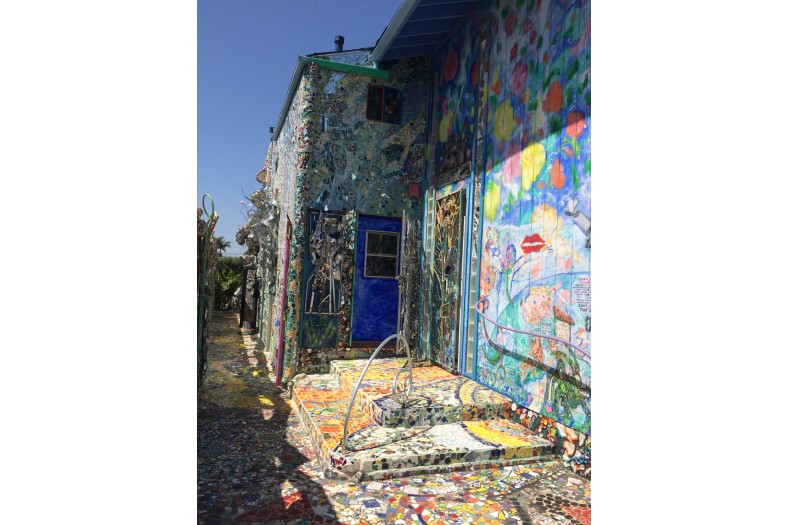









Post your comment
Comments
No one has commented on this page yet.